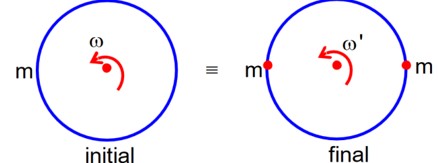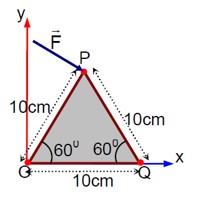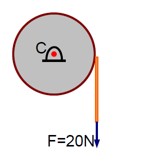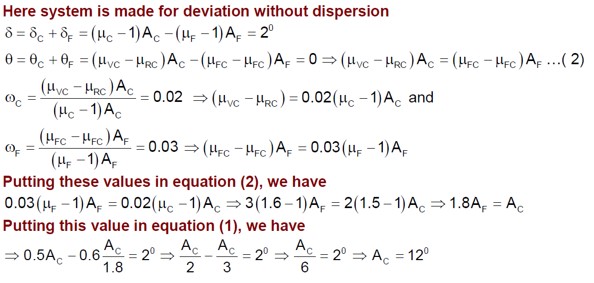A particle of mass 'm' is moving in time 't' on a trajectory given by r? = 10αt² i? + 5β(t-5) j?. Where α and β are dimensional constants. The angular momentum of the particle become the same as it was for t = 0 at time t = ______ seconds.
A particle of mass 'm' is moving in time 't' on a trajectory given by r? = 10αt² i? + 5β(t-5) j?. Where α and β are dimensional constants. The angular momentum of the particle become the same as it was for t = 0 at time t = ______ seconds.
-
1 Answer
-
r? = 10αt²î + 5β (t-5)?
v? = dr? /dt = 20αtî + 5β?
As L? = m (r? × v? )
So, at t=0, L=0
given L is same at t=t as at t=0
⇒ r? × v? = 0
⇒ (10αt²î + 5β (t-5)? ) × (20αtî + 5β? ) = 0
⇒ 50αβt² (î×? ) + 100αβt (t-5) (? ×î) = 0
⇒ 50αβt² k? - 100αβt (t-5) k? = 0
⇒ 50t² - 100t (t-5) = 0
⇒ 50t² - 100t² + 500t = 0
⇒ -50t² + 500t = 0
⇒ 50t (10 - t) = 0
⇒ t = 10 second
Similar Questions for you
Angular impulse = Change in angular momentum
[J] = [mvr]
[J] = [M1L2T–1]
By conservation of Angular momentum
Li = Lf

Position vector about O (r_o) = 5i + 5√3j
Force vector (F) = 4i - 3j
Torque about O (τ_o) = r_o × F
τ_o = (5i + 5√3j) × (4i - 3j)
τ_o = -15k - 20√3k = (-15 - 20√3)k
Position vector about Q (r_q) = -5i + 5√3j
Torque about Q (τ_q) = r_q × F
τ_q = (-5i + 5√3j) × (4i - 3j)
τ_q = 15k - 20√3k = (15 - 20√3)k
Kindly consider the following Image
The direction of torque and angular momentum defines how and in which orientation an object will rotate or sustain its spin. This is important to understand in machines, athletic movements, and even natural phenomena, such as planetary motion.
Taking an Exam? Selecting a College?
Get authentic answers from experts, students and alumni that you won't find anywhere else
Sign Up on ShikshaOn Shiksha, get access to
- 66k Colleges
- 1.2k Exams
- 680k Reviews
- 1800k Answers



